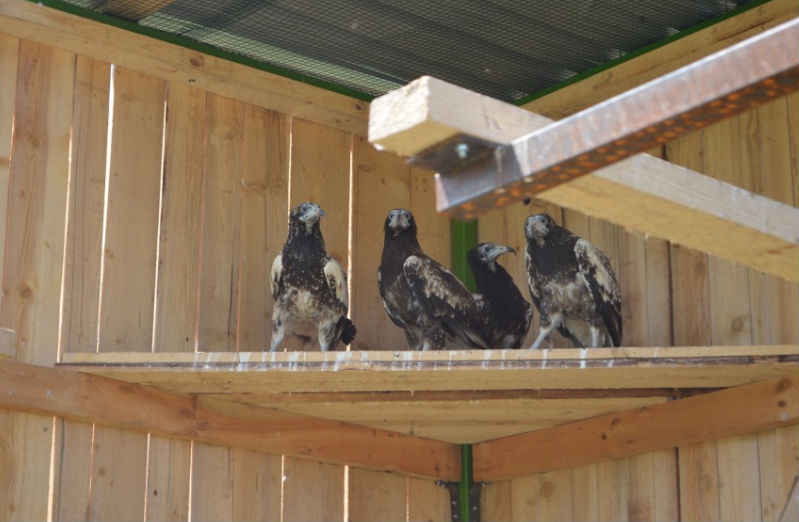The bearded vulture breeding season is in full swing – both in the mountains and at all the captive breeding centers and zoos housing bearded vultures within the VCF-managed captive breeding network for conservation (EEP). In captivity, we have more than 40 eggs now, so it looks like we will have again a good season, as there were 17 new potential breeding pairs which could start to breed this year!
Further, recently we did further analysis of the results of our joint work, and are very happy to report that there has been a significant decrease of the mortality rate within our captive population size (1978 captive stock <40 birds; 2016 captive stock 161 birds), while at the same time we have an increase of the average age of death (see graphs).
If we compare the average age of death during these almost 40 years within our captive breeding there is still a significant difference (10 years!) between the specialized bearded vultures captive breeding centers, where staff are focused only this issue (average age of death, period 1978-2016: 26.4 years old, n= 49 birds), and other institutions (zoos, parks and private collections, period 1978-2016: 16.9 years old, n= 85 birds)
However, if we compare only the last 5 years, this has completely changed, with a significant increase of the average age of death in the zoos (average age of death, period 2012-2016: 24.7 years old, n= 16 birds)
This all means that the number of birds needed to replace losses has been reduced, which in turns means that there is a higher number of birds for the reintroduction projects.
This success is mainly due to the improvement of the housing conditions of the captive stock, realized during the last years, particularly by new partners/zoos, which have reduced significantly the losses of young birds. During the last years, more than 10 zoos have rebuilt their old aviaries or built new ones following the guidelines produced by the VCF.
The VCF would like to thank all the partners for their increased investment – in labor and financially – for this iconic bird. Because of the increased productivity, we can now 4 on-going reintroduction-restocking projects (Alps, Grans Causses, Andalusia and Corsica), and have also been able to reduce the waiting time to obtain captive birds for new EEP Partners.
Photos: VCF





